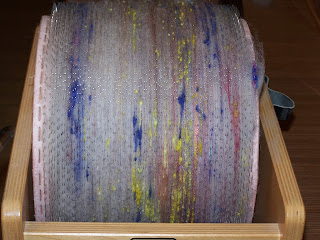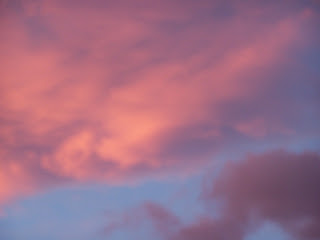You won't find many Polwarth Sheep in North America and it's a pity because I am smitten with their wool. In South America, they are called Ideals, which sums it up pretty succinctly.
To me, they are ideal because I relish anything soft and fluffy and petable, not to mention easy to spin, a sponge for dyes, and plays well with other fibers.
These guys came into being in the 1880s in Australia, Polwarth County. The breeder had Merinos that didn't fare well in the rainy climate of South Australia. So he crossed his Merinos with Lincolns (3/4 Merino, 1/4 Lincoln) to give us the heartier dual-purpose Polwarth with long, soft fiber and lean meat. They produce a 13-15 pounds of fiber (that's a ton of fiber gold!) with an average staple length of 6 inches and micron count of 23. Polwarths don't have a lot of wrinkles under those wooly sweaters of theirs, so their fleece is very consistent.
The fiber is a dream to work with, easy to prepare and gentle to the hands. Spin it worsted to enhance its natural brightness and sheen and to lend a nice drape to the fabric. Work it up into knitted, woven or felted items like hats, cowls, scarves, baby sweaters where itchiness can not be tolerated. Blend it with other luxury fibers like bunny angora, silk, cashmere, kid mohair, baby alpaca for a truly numinous fiber experience.
Word has it that Polwarth ewes are good mothers. How hard could that be if your baby looked like this!
This little guy is from the flock of Shirley Browsky, a fiber artist in Ottowa, Canada. Contact her if you are interested in fleeces. Maybe Puddles is ready to be your next project.
 |
| Photo courtesy of Shirley Browsky. |






































